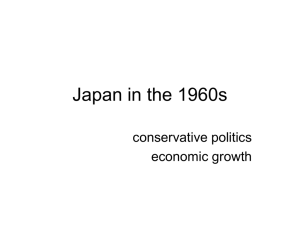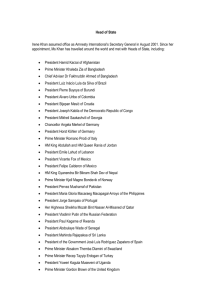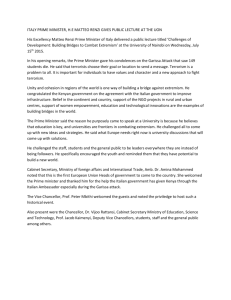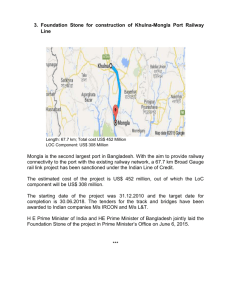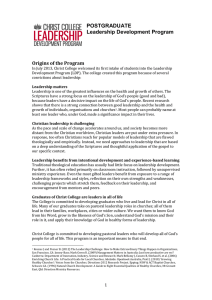Japan: Politics
advertisement
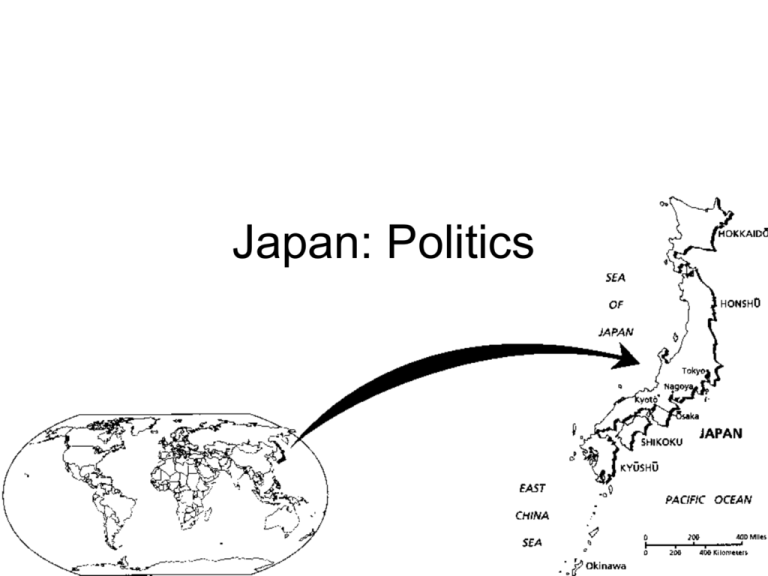
Japan: Politics Outline • Political institutions – parliamentary system of government – National Diet – Prime Minister and Cabinet – bureaucracy – Judiciary • Parties and elections National Diet • House of Councillors (Upper House) • House of Representatives (Lower House) – choose prime minister – pass budget – ratify treaties Prime Minister & Cabinet • All are members of the Japanese National Diet • Most are members of the House of Representatives Prime Minister • • • • Shinzo Abe (born in 1954) Prime Minister since December 2012 Liberal Democratic Party family’s political and economic power – father was Foreign Minister 1982-1986 • won father’s seat in the House of Representatives in 1993 LDP • All Prime Ministers of Japan • from 1954 to 1993 • from 1996 to 2009 • were from LDP The Bureaucracy • Heavy involvement in policymaking: – draft legislation (short and vague laws) – implementing or enforcing legislation • Recruit the best of college graduates • ``Prime Ministers come and go, but we are forever” - A Japanese bureaucrat Local government • Unitary rather than federal system: – local authority delegated by central governmt. – 47 prefectures • governors and legislatures – hundreds of municipalities • mayors and city councils • 2/3 of all government spending • 1/3 of all tax revenues Party Systems before '92 • Combination of multiparty system with sustained dominance of 1 majority party • Chaotic political party system 1946-55 – 2 conservative parties, 2 socialist parties, communist party, plus micro-parties • Party merges in 1955 • “One-and-a-Half Party System” Party System 1955 - 1992 Major Political Parties • Liberal Democratic Party (LDP) – conservative catch-all party • Japan Socialist Party (JSP) – “Japan Peace Party” • Japan Communist Party (JCP) – anti-emperor, anti-capitalism, anti-military – only party untainted by money politics National Vote Share Pre-1994 Electoral Rules Industrial contributions The Iron Triangle bureaucrats LDP politicians big business executives Political Earthquake of '93-'95 • Economic stagnation since late 1980s • Major corruption scandals of LDP leaders – 2.5 billion yen contribution from a company – 1 billion yen income tax evasion • LDP Diet members split and some left to form new parties • LDP coalition cabinets since 1996 New Electoral Rules (1996) • 480 members in House of Representatives – 300 elected from single-member districts – 180 elected from 11 proportional representation districts • 252 members in House of Councillors – 100 elected from proportional representation district – 152 elected from 47 prefecture constituencies Party Realignment (‘90s) Public support for parties Japan’s International Role • Yoshida Doctrine (pre-1980s) – political-economic cooperation with U.S. – small national defense expenditure – security guaranteed by U.S. (military bases) • Low-profile foreign policy • Trade policy • Economic superpower (1980s)

